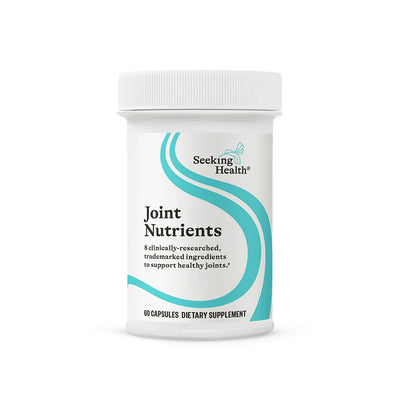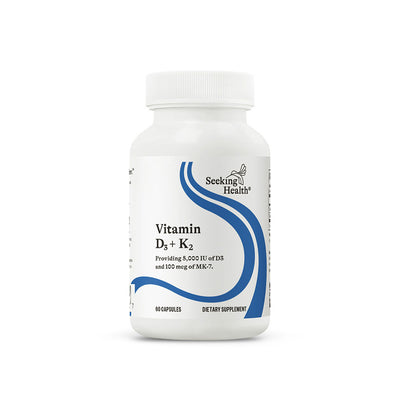When most people buy supplements, they’re concerned about the type of supplement they are getting. But the only way to really know what you’re buying is to thoroughly read the supplement facts label.
When you look at a bottle, this label is typically on the opposite side of the bottle from the product name. It will tell you the serving size and ingredients. But that’s not all.
It’s important to read supplement labels because not all supplements sold as vitamin C, for example, are identical.
- Dosages may be different.
- They may contain different forms or different nutrient sources (for example, folic acid versus L-5-MTHF).
- They may contain additional ingredients.
- They may also contain other non-nutritional ingredients, like a supplement capsule or sweetener for a liquid form.
- There may be allergen disclaimers, instructions for how to take, and more.
Disregarding this information can result in improperly taking a product or getting something that’s not exactly what you expected. Fortunately, you can learn how to read a supplement label like a pro and know exactly how to get what you want.
Here’s an easy way to know what you’re getting in your supplements.
What’s on a Dietary Supplement Label?

Supplement Facts are reported on each dietary supplement product. This is similar to the Nutrition Facts label that is found on food products, although they will report slightly different information.
A dietary supplement label will contain the following components, each of which has important information that you’ll want to understand about the product you’re considering.
Serving Size & Servings Per Container
The serving size is listed very clearly on the Supplement Facts panel. It will say something like “1 tablet,” “1 scoop,” “1 gummy,” or the like. The serving size reflects the nutrient quantities of each nutrient listed on the supplement label. It is essential to make sure that you’re taking a product as directed and don’t inadvertently overdose on a nutrient. This is especially crucial for supplements where the serving size might be one drop, not one dropperful.
Pay close attention to the serving size.
The servings per container tell you how many servings are in the bottle. If the serving size is 1 tablet and the bottle contains 30 tablets, then you have a 30-day supply unless your practitioner has directed you to take the product differently. Unless your doctor or healthcare provider tells you to take a supplement in a different way than the label indicates, you should always use the label serving size and information on the product to guide how you take it.
Amount Per Serving
The amount per serving in a supplement tells you how much of each ingredient is present in each tablet, drop, scoop, or however the serving size is indicated. This could also be considered the “dosage,” although it’s not referred to as such on supplement labels because the FDA considers supplements to be more like foods, not drugs or medications.
Noting the amount per serving is really important because potency per serving can vary dramatically between brands and even between different products by the same brand.
% Daily Value (%DV)
The percent daily value, which appears as %DV on supplement labels, is a bit more confusing to read. It represents how much each ingredient per serving contributes to that particular nutrient requirement based on a 2,000 calorie diet. Obviously, this is not necessarily everyone’s daily intake, but this is the way that supplement labels have been standardized. This is why it’s important to clarify with your healthcare provider what your supplement intake should be.
Not every nutrient or ingredient in a supplement will be reported as %DV, however. For herbal supplements and certain other ingredients, there has not been an established daily value.

Ingredients
The dietary ingredients in supplements will typically be listed in a few different ways. If we’re talking about vitamins, for example, they will be listed as their common nutrient name first. Take calcium, for example. It will be listed as calcium, and then in parenthesis, it will state the form that the nutrient is in, such as DiCalcium Malate. This should be true for every ingredient listed on a supplement. However, not all supplement companies list the nutrient form on their label. If this is the case, it is wise to contact the company to inquire about what forms they are using in their products.
This information is one of the more important facts you’ll want to pay attention to.
Reading the ingredients list can help you know whether you’re choosing a supplement with active, bioavailable ingredients (more absorbable forms) versus the cheaper, more common alternatives. For example, folic acid is an inferior form of folate compared to the bioavailable form of methylfolate (5-MTHF). Likewise, vitamin B12 in the methylated form of methylcobalamin is considered a superior form compared to the more common form, cyanocobalamin.†
Excipients (Other Ingredients)
Under the Supplement Facts chart, there will typically be a section listed as “Other Ingredients.” This will include any ingredients that are in the product but not expressed as “active” ingredients. These could include fillers, emulsifiers, lubricants, capsules, sweeteners, preservatives, and more. It’s always important to check this section, too, because sometimes allergens or other aggravating ingredients can be included here, like corn, gluten, or soy products. Magnesium stearate and stearic acid are common supplement additives that help to prevent sticking or clumping on manufacturing equipment. While the FDA recognizes magnesium stearate as GRAS (generally recognized as safe), some people may be sensitive to it. (2)
"Other" ingredients can include any ingredients that are not considered “active” ingredients such as fillers, emulsifiers, lubricants, capsules, sweeteners, preservatives, and more.
Expiration Date & Lot Number
Dietary supplements can have either a manufacture date (MFG) or an expiration/best by date (EXP). However, the FDA does not require supplement companies to include this information, and sometimes it’s not anywhere near the actual Supplement Facts. It could be found on the bottom, side, or lid. This information is important, however, to consider when a product may expire, and whether you will use it up before then. Lot numbers or other identifying information is required. This can be helpful if you need to report a problem to the manufacturer or if there is a recall.
Product Label Claims

DSHEA, the Dietary Supplement Health Education Act of 1994, is the supplement labeling and claims law that regulates what supplement manufacturers are allowed to tell consumers about the product (1). Because supplements are not drugs, they do not go through rigorous safety tests or trials before going to market. They’re also not necessarily third-party tested or vetted before being sold on shelves or online.
When you’re assessing claims a product is making, consider whether it sounds too good to be true.
Even though the FDA does not allow supplement companies to make false claims, they are an overloaded organization that can’t stay on top of everything. It’s possible to be able to purchase a supplement from an online retailer, like Amazon, that doesn’t come from a reputable company or that may be in violation of FDA regulations. This is why the brand that you choose matters but also where you purchase from. Third-party sellers are not always reliable unless you’re purchasing from a trusted practitioner.
It’s important to read supplement labels with a critical eye. After all, supplement companies want you to buy their product. That does not mean that all of them are not telling the truth! But it’s your job as the consumer to evaluate whether a product is what you expect it to be. The FDA does not place the burden of proof or safety on the manufacturer, so you are essentially assuming this yourself.
What kinds of claims can supplement manufacturers make?
Certain health claims are allowable by the FDA, but these are rare and typically highly established by research and longevity of use. Health claims are specifically related to disease and how the supplement may benefit it. Again, these are not typically allowed on supplements, but you may see something like “Calcium may reduce the risk of osteoporosis” or “Vitamin C may reduce the risk of scurvy.” When a supplement company makes disease or health-related claims that are not FDA approved, they can run the risk of being fined or having products removed from the market.
Structure/function claims are another allowable type of claim that involves how the ingredient or nutrient plays a role in maintaining either the normal structure or function of the body. These claims are not vetted by the FDA and must come with the FDA disclaimer that states, “These statements have not been evaluated by the Food and Drug Administration. This product is not intended to diagnose, treat, cure, or prevent any disease.” Structure/function claims may read like, “Zinc may support normal immune function” or “Iron may support healthy levels of hemoglobin.”
Other claims: Some supplements may state that they are natural, organic, whole, or use similar terminology. The legal definition for these terms is not specifically regulated by the FDA for dietary supplements, so these terms are largely meaningless. Consider whether they’re being used to make a supplement seem better than it is or so that it can be sold for a higher price.
The Bottom Line

Supplements can be a wonderful asset to a healthful regimen, but only if you know what you’re getting! Understanding how to read labels and how to use the product can determine whether you are safely taking a product or putting it to use in your life. If you ever have questions about whether a supplement can help with a condition, the best person to ask is your healthcare provider. They’re not limited by the FDA’s rules for health claims. Many medical providers recommend nutritional supplements for their patients, but don’t always go so far as to recommend brands. Make sure to get trusted providers to offer recommendations as well as other instructions on how to take supplements and use them to enrich your wellness goals.
Learn 10 ways we test your Seeking Health supplements here.
References
- https://www.fda.gov/food/dietary-supplements-guidance-documents-regulatory-information/dietary-supplement-labeling-guide
- https://pubmed.ncbi.nlm.nih.gov/23241129/
‡ This information is for educational purposes only. No product results are implied.











